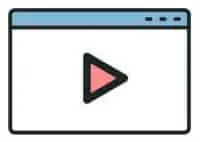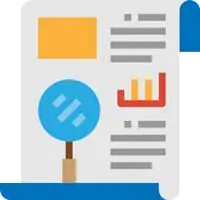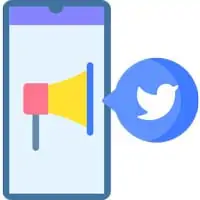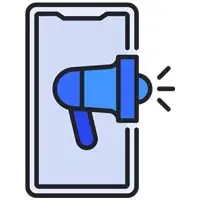Content creation is a foundational part of any inbound marketer’s job.
There is no shortage of content, messaging, and engagement that you can push out to your audience from blog posts to articles to tweets to Facebook posts.
That’s why any inbound marketer has to be creative and think outside the box at times.
Your content has to be timely, authoritative, relevant, thoughtful, unpredictable, informative, even funny.
The same content day after day can get stale and cause you to lose the community engagement you are seeking.
- How do you create new and innovative ways to produce fresh content seven days a week?
- What do you do when you’re a new business on Facebook and Twitter without a lot of followers?
- What should your business be blogging about?
The list of ideas that follows is intended to inspire the content that you create for your followers. It is purposefully broad and generic and is not meant for you to follow strictly, but is intended to spark creativity.
We hope that our brainstormed list will help inspire you to craft some fresh topics of your own so that you don’t run out of ideas.

Blog Post Ideas
- Do a screencast with the Screencastify Chrome extension of your product and then post it on your blog.
- Create a step-by-step guide on how to do something using a screencast, steps in a series of photos, or a how-to-video.
- Create an awesome video for your brand and post it on your company blog.
- Share someone else’s cartoon or create your own.
Tips and Tutorials
- Write an article to teach people about how to do a task. Provide instructions via screenshots or photos on steps that your readers need to follow to perform the job. For a real-world example check out our article, “How to Avoid an SEO Scam.”
- Point out some common mistakes and myths in your industry or niche. Offer solutions on how to avoid or correct them.
- Provide a list post of benefits for doing a particular thing.
- Share a list of things to avoid.
- Relate your how-to content to a recent event, pop culture, or even a celebrity. (example: 5 ways to not come across as crazy as Kanye).


Leverage existing content
- Take the opposite position. Play the devil’s advocate. Find an article that you agree with or disagree with. In the introduction of your post, describe what you agree (or disagree) with and then support your argument in a few brief points.
- Create a daily or weekly links roundup of relevant news for your local community (this helps in Local SEO a lot!)
- Note tips and tricks in other people’s content, create your own list of these tips and then give links to those articles as your sources.
- Share a brief excerpt from a white paper or eBook with a call to action (CTA) to download it to learn the rest of the information.
- Share a teaser from an upcoming webinar and provide a call to action to get the remainder of the info by attending or watching.
- Share slides from one of your recent presentations.
- Share takeaways from a conference that you’ve recently attended.
- Create a roundup of popular posts from the last week, month, or year.
- Share your interpretation of existing content. Share the top motivational Youtube videos for your audience, the most popular eBooks, most attended webinars, or most downloaded infographics.
Use various platforms
- Create a presentation on Slideshare with new statistics related to your niche. Share that presentation in a blog post. Be sure to tag the submission with relevant keywords for your niche to take advantage of the platform’s SEO benefits.
- People love to share their opinion. Ask your readers a question on Twitter, and then create a blog post sharing the results.
- Make a collection of Tweets from a conference, webinar, or any other hashtag. Display them, offering your own insights in your blog post.
- The weekend is when most people catch up on the reading that they don’t have time to do during the workweek. Create a few tweets of your posts during the weekend to help boost your website’s traffic.


Research
- Find and respond to research in your industry, offering your own perspective. This can provide a fresh angle to spark conversation.
- Do a survey among your community with Survey Monkey and then create an infographic with your results.
- Create a poll among your community. You can use Twtpoll on Twitter or Facebook’s built-in question feature. Post the results on your blog.
- Publish an in-depth case study of a company (or even a few companies), providing examples of things that they do successfully.
Influencers and Thought Leaders
- Do an interview with an influencer or expert in your field and post it to your blog. This could be recorded on video, text, or audio.
- Solicit experts to provide tips and create a list of their recommendations.
- Provide guest posts from experts in your industry.
- Answer frequently asked questions about your industry.
- Create a list of industry trends to look out for.
- Compare and contrast different companies, products, approaches, places, etc.
- Review non-competitive products or services that you use or that your community cares about.
- Act like a journalist: be the first in your niche to offer industry news.
- Explain what a trending topic or a news item means for your community or industry. For example: “What Covid-19 means for the Tulsa Community.”
- Dispel and debunk myths about your industry.


Show that you care for your community.
- Interview one of your recent customers
- Post a photo slideshow from a recent event. (Flickr is an easy tool you can use for this).
- Create a contest and give away something relevant to your local community.
- Have community members and leaders guest post on your blog.
- Share company news to inspire the reader. Make it all about them.
- Write a post relevant to your current season or an upcoming holiday.
- Show the top practical uses for your service, product, etc.
Twitter Content Ideas
- Respond to your Followers
- Use a client such as Hootsuite to keep track of your @replies. Reply to all questions posed by your users.
- Assign tweeting duties to appropriate team members who can answer questions applicable to their department.
- Add any questions to your FAQ page, and refer to it in tweets.
- Consider prewriting short (280 characters) responses to common questions so you can have real-time engagement with them.
- Use the @reply feature only if you want followers that you share in common to see the tweet. You can use the .@ trick to have all of your followers see the tweet.
- If a conversation becomes a heated debate, stop using the @reply, and use DMs.
- Remember to thank people who leave comments and share your blog posts.
- Thank the people who share your ebooks and webinars.
- Remember to write just like you talk. Don’t be scared to use emoticons and exclamation points. Write in first-person to show humanity and not to come across like a robot. For example: “We’re excited to share our complete guide for using Google My Business.” (That’s a thing, go ahead and click it and see.)


Tools for Twitter
- Use FollowerWonk to steal your competitors’ followers. Learn about them and then tweet the types of content and hashtags that they are interested in.
- Be sure to use a separate app for Twitter on your phone for your personal account than your business’s account to avoid getting your content mixed up.
- Put UTM codes in your tweets so that you can track referring traffic from Twitter in your Google Analytics accounts.
- If you’re tweeting as a part of a conference, webinar, or Twitter chat, alert your followers. Suggest that if they don’t want to see your tweets that they temporarily mute you.
- Identify demographic information of your Twitter followers such as nationality, gender, age, etc. using Audiense. Then tweet about relevant holidays to them.
- You can measure your click-through rates (CTR) on the links that you share using Bit.ly.
- Create and monitor a list of publications and companies that are important to your industry and community. That way, when breaking news happens, you’ll be the first to share it, building authority in your niche. (for more on the importance of authority, read our article entitled, How to Build Authority In SEO.
Share your Content
- Tweet Information about your recent blog posts. Split test a variety of headlines to see what drives the most traffic.
- Schedule tweets of your blog posts during the weekends. Remember that people catch up on their reading during the weekend. Consider scheduling some Tweets to occur during the night to be sure to catch your readers in other time zones.
- If your blog post contains tips, make one tip a link to your post or article a “teaser.”
- If your blog posts spotlight tools or other companies, carbon copy them on the tweets to let them be aware. They may even retweet your content, exponentially increasing your reach. For example, we created an article An Honest Review Of Yoast Academy.
- If creating evergreen content on your website’s blog, make sure to include Tweets of old posts as well. Likely, they are still valuable to your audience, especially those who may have missed it the first time.


Toss Other Platforms In the Mix
- Inform your Twitter followers of a great contest of discussion that’s happening on your LinkedIn group or Facebook page. Invite them to participate.
- Share a link to your email list on Twitter and invite people to sign up by sharing a link to a landing page on your website where they can sign up.
- Ask your followers a question and create a poll on Twtpoll. Then, use their answers for blog content.
- Join in on Twitter chats that are related to your community or industry.
- Resist the urge to cross-post your content to Facebook and LinkedIn. Those two are entirely different platforms, so treat them differently.
- When writing a blog post, consider asking members of your community to help. Reach out to them and ask their opinions, and if they have anything to add. This adds a personal side to the Twitter account.
Craft Original Tweets
- Give your followers a tip a day.
- Make them laugh with a joke or solve a riddle.
- Post photos. Show them with your working on, maybe a behind-the-scenes look at your business.
- Ask your followers about their opinion on a relevant topic. Collect the tweets and then, you guessed it, use them for a blog post.


Use Follow Friday
- Spotlight your most engaged community members on #FollowFriday
- Create a themed “special edition” of #FollowFriday and group individuals in your community that share a specific mission, trait, or contribution.
- Make your #FF followers feel special and engaged.
Content Ideas for Facebook
- Posting Statuses on your Business’s Wall
- Avoid automating Twitter updates to your company’s Facebook page. Treat Facebook differently.
- Tag people and companies in your status to promote increased engagement.
- Be sure to reply to users’ comments and likes on your statuses and posts.
- Consider having a guest host. Employ an influencer, celebrity, or have a company executive take over your Facebook page for an hour or a day. Have them interact directly with your community members.
- Solicit your followers’ opinions. Discuss questions that were asked elsewhere (Twitter, blog, in person, etc.) and ask your Facebook audience if they have the same problem.
- Get ideas from your community about what they would like to see in your next blog post, eBook, advertisement, webinar, or event.
- Tell the beginning of a joke and let your followers finish it. For example, “Why did the chicken cross the road?”
- Have them solve a riddle.
- Ask a hypothetical question. For example: Would you rather be ___ or ___?”
- Share a link to a blog post on your wall and then use the status area to extract one crucial fact, tip, or statistic from the post as a teaser.
- Share a link to your newsletter. You can use a tool like Shortstack or Mailchimp. Keep the form on a tab to see higher conversion rates.
- Share company information, news coverage, job openings, promotions, and milestones. Include numbers, as they stand out to most people.


Photos
- Tag people in photos. Their friends will see the images, and it could drive a new audience to your page.
- Share a mystery photo and have people guess who the person is, what the object is, or the location in the post’s comments.
- Create a caption contest. Have your followers write the best caption for the photo.
- Share photos from a recent event, local meetup, or conference.
- If you’ve interviewed an industry expert for your blog, post pictures from the interview on Facebook. This gives your fans a “behind the scenes” glimpse of your company.
- Post photos from a conference.
- Post photos of your products. Use the captions to describe them.
- Compare and contrast two of your products in a photo and ask your community to share their thoughts in the comments.
- If a blog post contains an infographic or image, share that image on a Facebook post and then link it to the post.
- Use your Facebook cover photos creatively. You can highlight a particular campaign, make a cartoon, show employees headshots. (We like to create brief videos for this area to keep users engaged).
Analytics
- Create posts about holidays. You can post a status wishing everyone a happy ____. Then use the demographics information within Facebook insights to learn what community segments are represented.
- Use Facebook Insights’ feedback metric to see what statuses get the highest %. Then replicate that type of content since it has the highest engagement and value for news feed optimization.
- Just like with Twitter, add UTM codes to the links that you share on Facebook to track what leads are coming to your website from the page.


4 Tips for Making the Most of Your Content
1. You have direct control of your on-page SEO, so you absolutely need to optimize it.
Ensure that it includes the right keywords and phrases for your business and that you’re consistent. You can do that in your page titles, page descriptions, and meta tags.
You’ll also want to include your keywords throughout your blog post content and H1 and H2 tags.
If you’d like to know more about the nuts and bolts about Search Engine Optimization, we can help you with our SEO coaching program.
Consider this: Google has no sense of humor.
Web crawlers have don’t laugh.
A witty phrase in your headlines may appeal to humans, but there’s a chance that Google may not see its’ relevance.
Write your blog titles as an accurate description of the post’s content, while keeping it compelling to draw your audience in when they see it shared on social media.
Use tools such as AnswerthePublic, Ubersuggest, and Google Keyword Planner to identify keywords and phrases to use in your content. Research popular search phrases to use with Google Insights.
2. Create an editorial calendar and follow it
Research shows that companies with active blogs get 55% more website traffic, and that number increases exponentially with the posting frequency.Expert tip: Consider starting a blog for your company. Blog as often as you possibly can, but keep the content valuable.
Be sure to include a call to action on every post. Optimize the free information that you give away with calls to action to get something in return – prospects that convert to leads.Be sure to include a CTA on everything such as:
- newsletters
- podcasts (make sure to optimize your podcast for SEO).
- events
Basically, add a CTA on anything that warrants a potential customer filling out a form to get more valuable information from you.
- You get closer to converting them into a customer. Make sure that your CTA matches your content. If you’re including SEO tips in a blog post, provide a related call to action, like a keyword research seminar.
Because it is related content that offers value to your target audience, you’re not only attracting them but engaging them further down the marketing funnel.
4. Share often on social media.
Search engines use social media content and consider tweets, Facebook likes, and shares in their algorithms.
The more your content is shared and engaged with, the higher it will rank.
These are called “social signals”

Keep in mind that not every potential customer may not live in your time zone, so don’t stop with just one tweet of a blog post.
Space out a couple Tweets and Facebook posts of your blog posts to ensure that your entire target audience sees them.
Conclusion
Remember, this list of inbound content marketing ideas is in no way comprehensive.
We hope that you see the value of posting timely, relevant, and engaging content to increase traffic on your website, and ultimately, your bottom line.
Let’s hear from you!
What methods are you going to employ first?
What types of blog posts are you going to write?
What’s the first blog topic you’re going to write on?
Drop us a comment and let us know.
